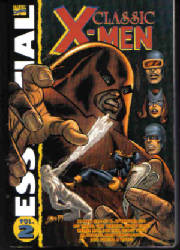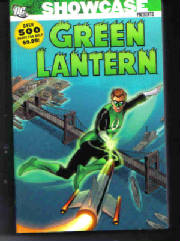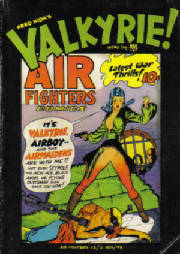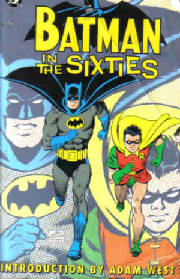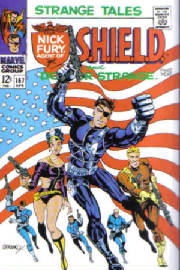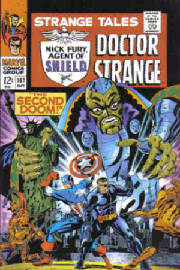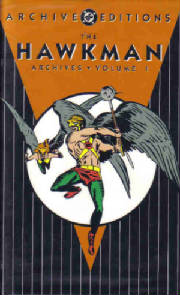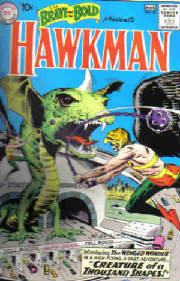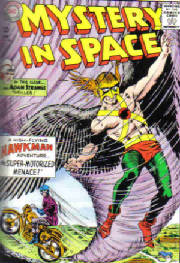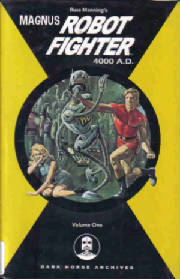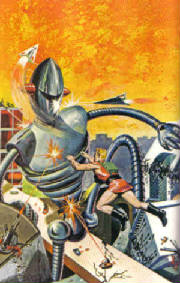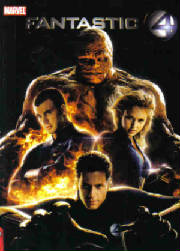THE ESSENTIAL CLASSIC X-MEN VOLUME 2. Reprinting X-Men (original silver age series) # 25 - 53 and Avengers # 53 in black and white. It has to be said that given the quality of most of the stories in this volume, it's understandable that the original X-Men series was canceled in the late sixties. The X-Men was just beginning to get back to the top of its game with a series of stories written by Roy Thomas and with attractive art by Neal Adams when it was discontinued; unfortunately those stories are not collected in this volume and to my knowledge have never been reprinted [they should be seen in color in any case]. Most of the stories in this volume are scripted by Roy Thomas, with a few written by Arnold Drake and Gary Friedrich. Art is done by a variety of pencilers, including Don Heck and Werner Roth.
As for villains, El Tigre/Kukulcan [25/26] is fairly colorless despite his dynamic powers. The Mimic [intro'd in 27], who can absorb powers from all mutants, was an interesting good/bad character who was under-utilized, even if he battled the Super-Adaptoid (who has the combined powers of some of The Avengers) in # 29. Issue # 30 brought back Merlin, who battled Thor in an early Journey into Mystery, as The Warlock; he returned to fight in Beast and Iceman as Maha Yogi in the forgettable 47. The Cobalt Man was a fairly routine Iron Man clone in issue 31; ditto for Mekano in 36. The Juggernaut returned in an undistinguished two parter in 32 and 33, while the Mole Man and handsome Tyrannus clashed with the X-Men as background fodder in 34. The most interesting stories in the collection have to deal with Factor 3, a sinister group out to rule the world that seems like an alliance of evil mutants but is actually led by a blob-like alien. These stories climaxed in issues 37 - 39, which are arguably the best in the book. By this time there were fairly unmemorable back-up stories in most issues featuring the origins and backgrounds of the individual X-Men (these are included in this volume).
The X-Men met the alien creature that formed the basis of Frankenstein in issue 40. A battle with underground mutant Grotesk in the awkwardly-scripted 41 -42 resulted in the alleged death of Professor X.. The X-Men battled old foe Magneto and some of his evil mutants in 43 - 45 [climaxing in Avengers 53, reprinted in this collection], with an unnecessary side trip/battle between The Angel and the-out-of-suspended-animation Red Raven in 44. The Magneto issues were slightly better than most others (aside from the Factor 3 stories). Beginning with 46, which featured the return of the Juggernaut, the X-men were inexplicably split up by the FBI and had adventures in pairs instead of as a group; this new approach only lasted for two issues, however. In addition to the aforementioned Maha Yogi misfire, Cyclops and Marvel Girl (in disguise as a model, no less) battled Computo (who turned out to be Quasimodo from FF annual # 4) and the Hive; a lost X-Men story that should remain lost. Issues 49 - 52 featured some interesting stories with Magneto claiming that Lorna Dane - introduced in # 49 - was his daughter; two of these issues had crude but compelling art by Jim Steranko. 53 features a battle with Blastaar from the FF with seriously crude early art by Barry Smith. An interesting collection to be sure, but only essential for the X-Men completist.
SHOWCASE PRESENTS GREEN LANTERN VOLUME ONE. This collects Showcase 22 - 24 and Green Lantern # 1 - 17 in black and white. All stories are written by John Broome and pencilled by Gil Kane. Kane's pencils, incked by Joe Giella or Murphy Anderson, are elegant, beautifully composed, and simple, so simple - and this is not meant as a criticism - that they suffer a bit without the coloring. Hal Jordan meets a dying Abin Sur, assumes the identity of Green Lantern, watches gal pal and boss Carol Ferris fall for his alter ego even as he pines for her himself, becomes slowly aware of the Guardians of the Universe and the GL corps, befriends Thomas "Pieface" Kalmuku; and discovers the evil dimension of Qward and its eventual ruler, the renegade GL Sinestro. The stories are generally entertaining even if many are distinctly on the minor or mediocre side. Highlights of this volume include "The Invisible Destroyer" from Showcase 23, "The Diabolical Missle from Qward" in issue 4, "The Power Ring That Vanished" in GL 5; "Battle of the Power Rings" in # 9; "The Man Who Conquered Sound," which introduced Sonar, in 14; "Peril of the Yellow World" in 15; and especially The Challenge from 5700 A.D" in issue # 8 (the special beauty of its cover is lost in black and white). This is the first story in which GL is sucked into the future to assume the identity of Pol Manning. There are also several short back-up stories, including the "Zero Hour" tales in which GL thinks his ring has run out of power. An interesting aspect of "Green Lantern's Brother Act," the back up in GL 19, is that the nosy reporter Sue Williams tries to prove Hal's brother Jim is GL by planting a kiss in "indelible lipstick" on Green Lantern's cheek. [One wonders if Lois Lane ever tried this same trick on Superman?] The next day, however, Jim has a bandage on his cheek from a shaving cut in the exact spot where GL was kissed. Of course it was really Hal Jordan who got bussed, but we never see if he shows up anywhere sporting a lipstick print. (Chances are his ring could get rid of the stay-put lipstick kiss anyway.) Recommended if you don't have or simply can't afford the originals, and these days who can?
Fred Kida's VALKYRIE AIR FIGHTERS COMICS [with Airboy.] This is a trade paperback collection of stories that were originally published in the golden age Air Fighters comics featuring Airboy. This collects all of the major stories in which Airboy battled, dallied with, or allied himself with The Valkyrie, a Nazi agent who with her voluptuous Airmaidens improbably switched sides, possibly because of a romantic/sexual attachment to young Airboy. The sexy Valkyrie starts out whipping Airboy's naked back then winds up making out with him. Despite the rather obvious s & m and other erotic overtones to these stories, they are fairly tame by today's standards and not of such great interest. The art is often quite nice but reproduced in black and white. Written commentary provides historical background for the stories and characters, and shows that some later writers didn't quite understand the essentially friendly relationship between Airboy and Valkyrie. Certainly this is an inexpensive way of reading some "classic" golden age stories.
BATMAN IN THE SIXTIES. DC Comics trade paperback 1999. Various writers and artists. This is a terrific collection of stories from Batman and Detective Comics that shows how Batman evolved during the decade from a quaint character with a whole "Bat Family" [everyone from Batwoman and the first Bat-Girl to Bat-Imp and Ace, the Bat Hound] to a more serious character who was quickly undermined by the camp approach of the TV show to the more realistic Dark Knight we've come to know today. The collection includes detective puzzlers such as The Case of the Deadly Gems, villain origins such as The Challenge of Clay-Face and Beware of - Poison Ivy, Bat-foe appearances such as The Joker's Comedy Capers (in which he impersonates famous silent comics) and The Riddle-Less Robberies of the Riddler (in which he tries to pull a job without first warning The Batman). There's also a nifty solo Batgirl adventure [the second unhyphenated Batgirl} and a fairly mediocre Robin solo outing. The final story One Bullet Too Many has a grown Robin going off to college and a lonely Batman closing up the estate and Batcave and moving with Alfred into a penthouse in Gotham; the beginning of a "grittier" era. Lots of fun and a good historical comic document as well.
NICK FURY, AGENT OF S.H.I.E.L.D. Steranko & Co. Marvel trade paperback; 2001. Reprints Strange Tales #150 - 168 [1966 - 1967]. This presents the early run of Jim Steranko on the Nick Fury strip, and begins with the story in issue # 150, which was actually pencilled by John Buscema over Jack Kirby lay-outs. Steranko took over as penciller with the next issue, with Kirby still doing lay outs. Eventually Steranko not only took over the lay outs, he also wrote the scripts for the SHEILD series. For much of this book's length, Steranko's art is highly unimpressive, only showcasing his shortcomings as an artist, including awkward poses, weak anatomy and bland compositions. In the later stories, however, his page lay outs are cinematic and interesting, and he begins to experiment in creative ways. Various inkers don't necessarily improve upon Steranko's own inks, although Joe Sinnott adds a noticeable sheen. The story arcs concern SHIELD's battle against the forces of Hydra [headed by Baron Strucker] and, after that, the sinister Yellow Claw [Fury's battle with the Claw's giant octopus is memorable]. Doctor Doom makes a surprise guest appearance at the end of the Yellow Claw arc, and the final story has Fury experiencing a bizarre dream involving a malevolent visitor from outer space. Steranko introduces Clay Quartermain and the Contessa Valentina Allegro De Fontaine (Val), but neither are given much to do.
The stakes are always high in these mini-thrillers, with Fury surviving against all odds no matter how many bombs, bullets or doom-traps are thrown at him and his buddies. Both Manhattan and the entire world are nearly destroyed - more than once - in these issues. The scripts, which always employ what might be called Truly Crazy Technology, have interesting situations, such as when Strucker disguises himself as a top SHIELD agent and gains access to their HQ -- and loyalty -- in an effort to destroy not only Fury but the turncoat daughter of the last Hydra leader. This book is entertaining if decidedly minor. The prose sections, all about the genius of Steranko, border on hyperbole at its most hysterical.
THE HAWKMAN ARCHIVES VOLUME ONE. DC Comics; 2000. A hardbound volume of the origin and early adventures of the Silver Age Hawkman and Hawkgirl in Brave and the Bold and Mystery in Space, wherein the winged couple shared the stage with Adam Strange. The first story, "Creature of a Thousand Shapes," in Brave and the Bold 35 is a knock-out, telling how our intrepid married duo of crime fighters from the planet Thanager trail the thief Byth to Earth after he's stolen a pill that allows him to metamorphose into anything [a la Multi-Man of the Challengers and Changeling of the Titans]. In one startling, if absurd scene, used for the cover, Byth transforms into a huge dinosaur-like creature, squeezes into a tunnel [it makes for a startling sight to see him sticking his head out of the other end], rips it out of the earth, and flies off with it. This first story establishes Hawkman and Hawkgirl on Earth under the guise of museum directors, and introduces Mavis Trent, who has the hots for Hawkman. Joe Kubert's artwork for this and other stories in Brave and the Bold is always smooth, well-composed, and elegant, if not quite "dynamic."
The art chores on the stories from Mystery in Space are done by Murphy Anderson and Carmine Infantino; both offer their usual exemplary work. With the exception of Byth, who appears twice in this volume, and the Shadow-Thief, the villains are somewhat colorless, but the real problem is that, despite all the interesting trappings, the winged heroic duo are almost the same. Some of the stories by Gardner Fox are clever, with intelligent methods of trapping the bad guys, but the heroes at the center of it all just don't thrill in the way of The Flash and Green Lantern, and Hawkgirl lacks the colorful vibrancy of Wonder Woman. The team up between Adam Strange and the Hawks in Mystery in Space 90 ["Planets in Peril"] looks great but is a bit disappointing. [The Hawks actually met Strange in his regular identity in previous issues but had no idea of his heroic role on Rann.] Hawkman fans will relish this volume but it's not a must-buy for anyone else, although fans of the individual artists will certainly find much to delight and admire.
MAGNUS, ROBOT FIGHTER 4000 A.D. Volume One. Dark Horse Archives. Collecting the first few issues of Magnus, Robot Fighter 4000 A.D., which was originally published by Gold Key Comics in 1963. The premise has Magnus, a human who was [ironically] raised with special qualities by a robot, fighting not only against evil robots and humans who employ them, but against the way the human race has let itself become soft and dependent on metal servants. The stories are cartoon-simplistic, but often entertaining; the real selling point is the attractive and strikingly composed artwork of Russ Manning. Magnus is a super-rugged, drop-dead handsome guy whose girlfriend, the fast-driving Leeja Clare, is sort of cut from the familiar femme fatale cloth although subsequent stories watered her down a bit. Issue # 2 has a human villain who worships robots creating artificial duplicates of Magnus and members of the North Am (North America is one big city) council. Issue # 3 features a giant robot crashing through the city at the bequest of a recurring villain, the silly-looking Xyrkol, who also turns up in issues # 5 and 7. T1, the "Think Rob" of issue # 4 is capable of "human-style logic" and attacks the undersea plants that provide food for the people of North Am. T1 is a formidable foe, cleverly designed, who reminds one a bit of the antagonist in the movie Robocop. Issue # 5 features an excellent story about a robot "Immortal" who can switch his consciousness from one destroyed body to a new one, and really causes headaches for our hero. In "Alone Against Talpa" in issue # 6, a super-hard metal robot leads a rebellion in an underground city, taking the wives and children of the scientist residents [what - no lady scientists in 4000 A.D.?] hostage. In one of his most exciting adventures, Magnus comes to the rescue in a story that also features "troglodytes," not pre-humans in this case but rather big bugs with ant-like heads, big pincers, and many legs. Issue # 7 has the one thousand people saved from a robot-run machine in an earlier story use their combined brain power to help Leeja reach out across the universe with her love to Magnus as he fights against a robot with the power of a world behind it. It's interesting that when DC Comics came up with their Metal Men, their inventor was named Will Magnus. Manning's art is really special, with some especially beautiful cover work. The library copy that I perused was a gift from the Carnegie Corporation as a memorial to the lost souls of 9/11. That might seem odd until you remember that in its own cartoonish way Magnus is a tribute to the indomitableness of the human spirit.
FANTASTIC FOUR trade paperback 2005. This collects Fantastic Four: The Movie; FF # 5 (1962); FF # 190 (1978); and FF # 60 (Vol. 3; 2002). The movie adaptation is pretty much a waste, with uninteresting pencils by Dan Jurgens that are not helped in the least by Sandu Florea's inks. FF # 5 is the classic first appearance of Victor Von Doom, who forces the FF to use his time machine to get some mystical booty from Blackbeard the Pirate. It turns out that The Thing actually is Blackbeard, and for awhile he's so happy being accepted by the pirates that he tries to prevent the Human Torch and Mr. Fantastic (Sue has stayed behind as Doom's hostage) from taking him back to the present. Jack Kirby's art is nice enough, but the story spends too much time with the pirates and not enough on Doom. Still, it's miles ahead of the album story from # 190, which has surprisingly ugly art from Sal Buscema and Tony Dezuniga as The Thing reviews major events in the life of the group. Issue # 60 has Mr. Fantastic hiring a public relations man to help increase the group's faded celebrity; at the end we learn that Reed (who couldn't care less about being a celebrity, of course) felt that it was better for his loved ones - who were mutated due to his arrogance and mistakes - to be celebrated instead of being seen as freaks. He figures this will help them to forgive him for what happened. Mark Waid's story is interesting, if a trifle silly at times, but the art by Mark Wieringo and Karl Kesel is fairly wretched, much too cartoonish for this kind of strip. Since FF # 60 is said to be a reboot of the series, it's no wonder it hasn't looked that good or been all that interesting for years. True, Jack Kirbys don't grow on trees, but shouldn't "the world's greatest comic book" have memorable art?
IRON MAN VS. DOCTOR DOOM. 1994. This collects Iron Man # 149, 150, 249 and 250, all of which featured encounters between the two title characters in two separate - if related - storylines. The first has IM come a'cropper of Doom when he prevents the latter from getting his hands on some dangerous technology; IM has to follow up and confront Doom in his own territory. IM then winds up being inadvertently taken to the days of Camelot along with Doom, because the deadly doctor wants to get Morgana Le Fey to help him free his mother from Hell. Morgana agrees to help Doom if he leads an attack upon King Arthur and his forces, whom IM naturally aids. When Doom's plans are stymied, IM and Doom have to help each other in an effort to get back to their own time. The second story has the two being magically transported to the future where Merlin has reawakened and the spirit of King Arthur - only a boy -- is contained in a new body. IM battles a descendant of his who is using a high-tech variation of the armor to no good purpose, as well as using old Star Wars technology to create death on Earth. Doom discovers - and is disgusted by - his future self, who is kept barely alive through artificial means. Both stories [by David Michelinie] are good, and have nice art by Bob Layton and John Romita Jr. The second story is especially exciting. While these aren't necessarily top-drawer Iron Man adventures, they will certainly appeal to fans of Victor Von Doom. One serious quibble: Michelinie actually has Doom call Merlin "a squirrelly excuse for a potion pusher." Granted, these may be "lighter" Doom tales, but one can't imagine Doom using a word like "squirrelly" -- ever.
